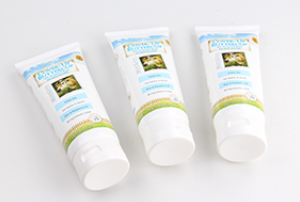- WhatsApp: +86 13606526028
- Email: contact@utien.com
When choosing tube filling equipment for plastic tubes, it is very important to understand the various types of tube sealing options available.
With this system hot air is generated and blown into the open end of the plastic or laminate tube. This heated air penetrates the plastic tube wall heating the material enough to make it soft and pliable. A set of tube sealing jaws then crimps the softened plastic to weld the open end closed. The primary advantage of this tube sealing technology is its speed. Another advantage is hot air sealers work with the largest range of laminate or plastic tubes. Whether the tube material is LDPE, MDPE, HDPE, PP, Mono layer or multi-layer with or without EVOH barrier protection, hot air tube sealing should work. A disadvantage however is the need for specific hot air nozzles sized to each diameter tube that is filled and sealed. This will add to the cost of change parts needed for the tube running.

Ultrasonic tube sealing is another popular option found in the packaging industry today. Standalone tube sealers using ultrasonics are popular for small volume tube runs. Tube filling machinery can also be retrofitted with ultrasonic tube sealing systems as an alternative to hot air sealing. With ultrasonic tube sealing, plastic and laminate tubes are sealed by high frequency vibration of an ultrasonic sealing horn. This high frequency vibration generates intense heat at the tube wall which causes the polyethylene tube plastic to soften. The open end of the plastic tube is held closed under pressure from the sealing horn and matching sealing anvil, thus forming a strong weld. Advantages of sealing tubes with ultrasonic technology are the ease of use, no need for custom-made size parts, and ability to seal through product contamination in the seal area. The disadvantage however is lower tube sealing speed compared to hot-air sealing.
1. Working principle: as for heating-type machine, sealing is by temperature, so lower temperature or higher temperature both will influence the sealing condition, so it is hard to control and will hurt the filling material. While for ultrasonic sealing, it is sealed by ultrasonic, so it is easy to control, no need to adjust temperature. And it won’t hurt the filling material because of the high temperature.
2. Application ranges: Heating sealing type machine is more suitable for plastic tube, while ultrasonic machine are suitable for plastic tube, aluminum-plastic tube as well as composite tube and can guarantee perfect sealing condition.

3. Cost for sealing mold or tube holders: for different diameters of tubes, heating sealing machine need to change sealing mold and tube holders. The cost is about 2000 USD. While for ultrasonic machine, for different size tubes, it just need to change related tube holders. The cost is just 250 USD.
4. Frankly speaking, ultrasonic machine is more stable than heating sealing machine not because the working principle, but also because when problem take place with machine, ultrasonic machine is easier to test and repair, while heating sealing machine is more complex. The heating sealing machine is mechanical and each part is linked with other parts. If one part is broke down, other parts can not work normally.
Finally, we have to say that with the progress of science and technology, the electric heating mode is gradually removed by the ultrasonic heating mode. As a professional manufacturer of packaging machines, who has been in packaging industry for more than 20 years, we recommed you to purchase a quality ultrasonic tube sealer from us. If you have any inquiry, please kindly click here to contact us.
By continuing to use the site you agree to our privacy policy Terms and Conditions.